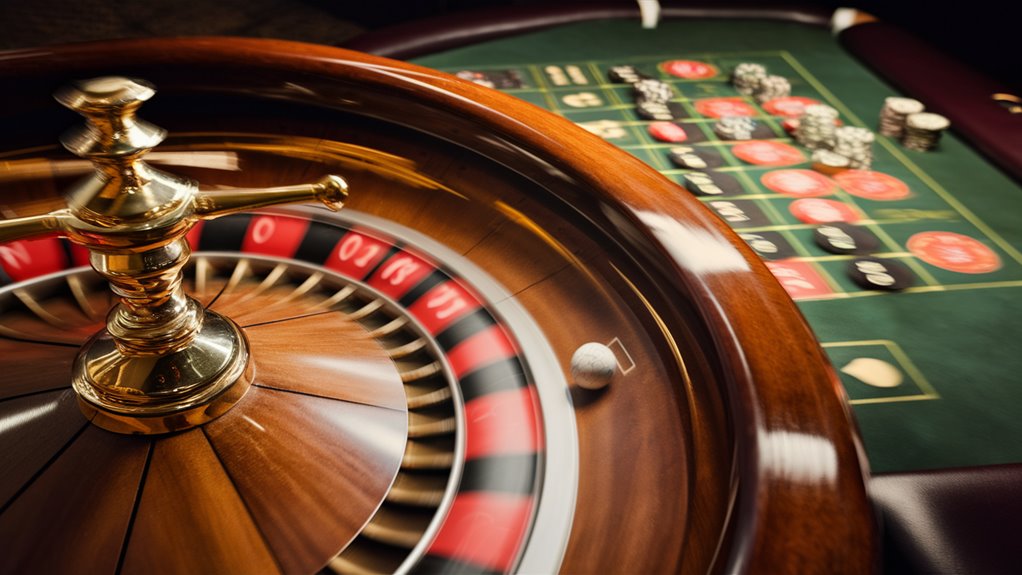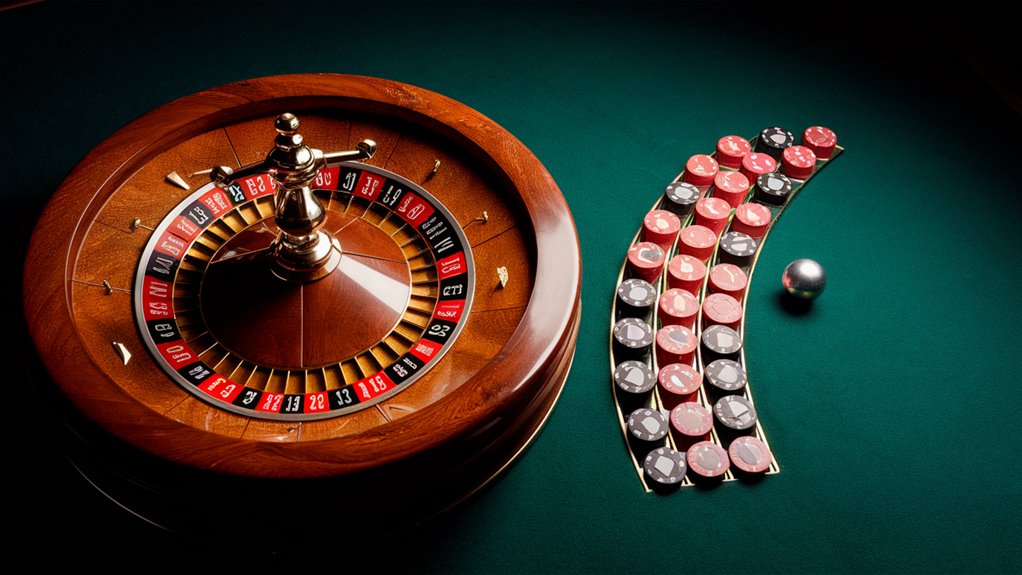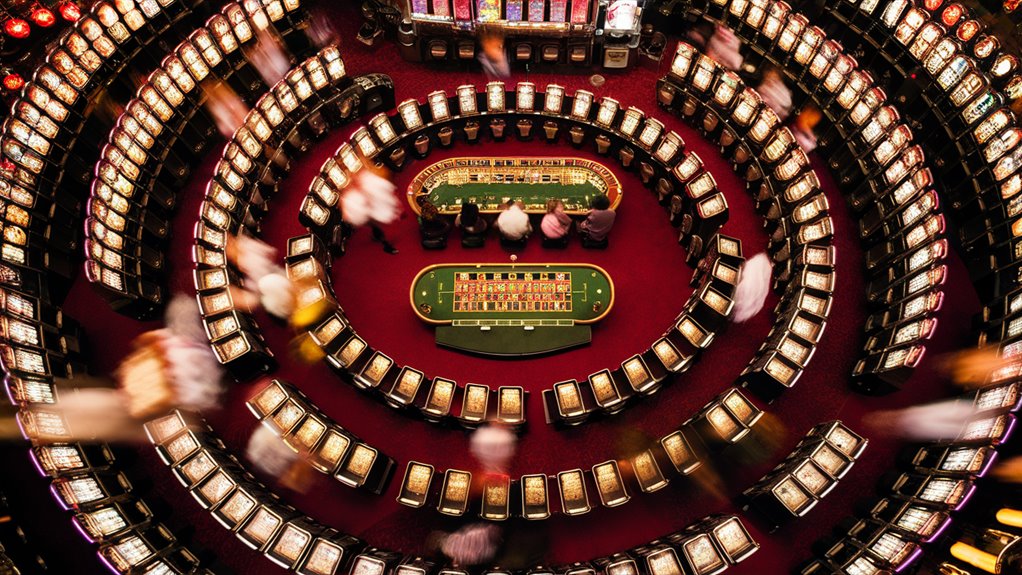
The House Edge Explained, How Casinos Ensure Profitability
The House Edge: How Casinos Stay in the Win

Getting How Casino Math and House Gain Work
The house edge is the math perk in every casino game that keeps casinos winning. This edge is set from 0.5% to 15% in different games. Over time, it makes sure casinos come out on top.
Main House Edge Cases by Game
European Roulette has a 2.7% house edge. This means, in the long run, players lose about $2.70 for every $100 they bet. Other well-liked games have their own set edges:
- Blackjack: 0.5-1% (with smart play) 온카스터디
- Slot Machines: 2-15%
- Craps: 1.36% (on pass line bets)
- Baccarat: 1.06% (banker bet)
Numbers and Odds at Work
Casinos use the law of big numbers to make their math edge into steady money. Even if one player’s results might swing, the house edge is nearly sure to win when:
- Players make 60+ bets each hour
- Thousands play each day
- They make millions of bets each month
This much betting, with set odds, builds a strong business style where statistical odds mean casinos make money over time.
Knowing The House Edge in Casino Play
What’s the House Edge?
The house edge is the math perk that lets casinos keep a lead over players in all games. For example, a 2% house edge means that players tend to lose about $2 for every $100 they bet over many games.
House Edge in Day-to-Day
Even though one day’s games can go many ways, the math odds mean casinos come out ahead by keeping a consistent house edge across lots of players and many bets. Players might win big or lose big in one go, but the math stays the same.
Math Talk on the House Edge
Example: European Roulette
European roulette shows clearly how house edge works with its 2.7% advantage.
Having one zero makes uneven red and non-red numbers (18 to 19), even while payouts stay the same. This mismatch between the true odds and payout odds gives the casino its winning edge.
Over the Long Haul
The casino edge shows up through:
- Odds and math in the games
- Steady house edge
- Risk and reward settings helping the house
All these ways make sure casinos make money while still letting players have wins, showing how the house edge is a basic part of how casinos work.
Math Behind Casino Games
Main Odds Ideas
The math that runs casino games uses exact odds calculations, number plans, and value guesses. These parts set both the wild swings in short term and the likely results in long run.
Roulette Math
European roulette uses key odds rules with its 37-spot wheel. The chance of hitting a given number is 1/37, while payout stays at 35:1. This math gap gives a 2.7% house edge, showing how casinos keep their upper hand with careful odds work.
Blackjack Odds Study
Blackjack tactics depend on odds that change as cards come out. With number tricks, changes in the deck shift how likely players are to bust, changing how one should ideally play.
Slot Machine Math
Random number setups (RNGs) work with set odds designs to give set payback rates. A slot set for 95% payback uses math tables to ensure $95 comes back for every $100 played, keeping a 5% house edge from careful payout table setups.
Key Math Parts:
- Chance Theory
- Number Study
- Value Guesses
- Random Number Making
- Number Tricks
Getting Casino Game House Edges and Likely Returns
Loved Casino Games and Their Math Leads
House edge parts are key in showing likely returns from different casino games. Knowing these math leads helps players choose wisely where to play.
Table Games with Good Odds
Blackjack is best with a house edge of 0.5% to 1% with smart play. But new players might face edges of 2-3%. Baccarat keeps steady edges, with 1.06% on banker bets and 1.24% on player bets.
Dice and Wheel Games
Craps has different edges based on the bet. The common pass line bet has a 1.41% edge, while odd bets can go up to 16.67%. In roulette, the type of game changes the odds – European roulette has a 2.7% edge, while American roulette goes up to 5.26%.
Games on Screens
Slot machines usually have edges from 2% to 15%, while video poker offers better odds between 0.5% and 5%. Caribbean Stud Poker works with a 5.22% edge, and Let It Ride keeps a 3.51% house advantage.
Guessing Likely Returns
These parts lead directly to likely losses over time. For instance, betting $100 on American roulette means an expected loss of $5.26 over time, showing the math effect of house edges on player returns.
Getting the Law of Big Numbers in Betting

The Math Base of Casino Money
The Law of Big Numbers is a core stats rule that controls chance results in betting and more. This math idea shows why casinos keep making money even with day-to-day swings in player scores.
Stats Coming Together in Casino Games
Over long times, betting outcomes must come close to the expected odds. While a single game day might swing a lot, the total results get closer to what math predicts as bets add up. This becomes clearer as more bets are made.
House Edge and Long-Run Odds
Casino house edges work well over time. Look at a game with a 2% house perk – while one day might swing away from this, the total results over many plays will edge toward that 2% mark.
Real World Example: Roulette
American roulette shows this idea well. The built-in 5.26% house edge might not show in a few games:
- Short span (100 spins): Results can swing a lot
- Medium span (10,000 spins): Swings drop a lot
- Long span (100,000+ spins): Results match the 5.26% edge well
Money Plans and Looking Ahead
This sure math lets casinos guess money flow well. Even while betting is up and down, the Law of Big Numbers makes sure that lots of play leads to steady, predicted money that fits what the odds guess.
Keeping Risk Down Through House Edge
Getting Casino House Edge and Risk Plans
The Smart Mix of Casino Money Plans
Casinos set exact house edge numbers to find a good balance between making steady money and keeping players coming back. With smart math modeling and risk checks, gaming spots keep their edge while giving a fun player time.
House Edge Changes Across Games
The usual house edge range is from 0.5% to 15%, split smartly across different games. High-stake games like baccarat keep a low 1.06% edge, pulling in big-money players and big bets. On the other hand, slot machines have higher edges between 2-15%, aimed at players looking for fun and more game time.
Using Big Numbers to Keep Risk Low
Statistical swings can make short-term scores change a lot but get more regular with more games. A game with a 5% house edge might see big swings in 100 plays, but over 1,000,000 plays, it will come close to the expected return rate. This math rule is why casinos focus on many plays.
Smart Risk Plans
Casinos use smart risk spread plans through careful control of:
- Table limits
- Game mix
- Player types
These ways help keep a balanced risk while making steady money from different player types. The math care in setting house edges makes sure casinos keep making money while keeping players interested.
Top Risk Control Moves
Watching in real time and changing game rules as needed lets casinos keep the best risk levels. Through number checks and watching player moves, spots keep refining their approach to house edge plans, making sure they stay up and strong in the market.
Getting Casino Mind Tricks and Math Edge: Knowing Player Moves
The Mix of Player Mind and Stats in Casino Play
The strong mix of player mind and chance numbers builds the base of how modern casinos work. Players often get the wrong idea about their winning chances, focusing a lot on right-now scores while not seeing the sure math of the house edge. The casino’s math lead grows stronger with more play, using the basic law of big numbers.
Knowing House Edge and How Players See It
Blackjack’s house edge of 1.5% shows how casinos keep making money with exact math. For each $100 played, players tend to lose about $1.50 over time. The selective memory effect makes a big mind skew where players recall wins more than losses, affecting how they think about their game moves.
Real Stats vs. Mind Tricks
The mind impact of betting works right with casino math to make a strong money-making way. Players often remember big wins (like a $500 gain) more than several small losses (like $100 lost over different times). This mind gap, along with the ongoing house edge, often makes players bet 20-30% more than planned, making the casino’s spot stronger through both mind and math leads.
Main Points in Casino Gains
- Math edge through carefully set game odds
- Mind tricks changing how players choose
- Selective memory changing betting moves
- Long-run odds making sure casinos win
- House edge growing with more play
How to Guess Casino Money Made: A Full Guide
Key Money Bits
Casino money guesses need exact math plans of three key things: day player counts, bet sizes, and house edge parts. This full breakdown shows just how to guess casino cash made.
Main Money Guess Breakdown
The core casino money guess multiplies these key bits:
- Player count each day
- Average bet size
- Bets each hour
- Total play hours
- House edge part
Sample Money Guess
Blackjack money guess shows this in action:
- 100 players
- $25 average bet Cinderroot Poker: Planting Smoky Freedoms for Pot-Holding Mastery
- 60 bets each hour
- 4 hours of play
- 1% house edge
Expected day money: (100 × $25 × 60 × 4) × 0.01 = $6,000
Top Money Guesses
Number swing checks add in:
- Usual number changes
- Trust span guesses
- Season shifts
- Table fill rates
- Work hours effects
These bits let casinos guess month and year money well across all play ways.

